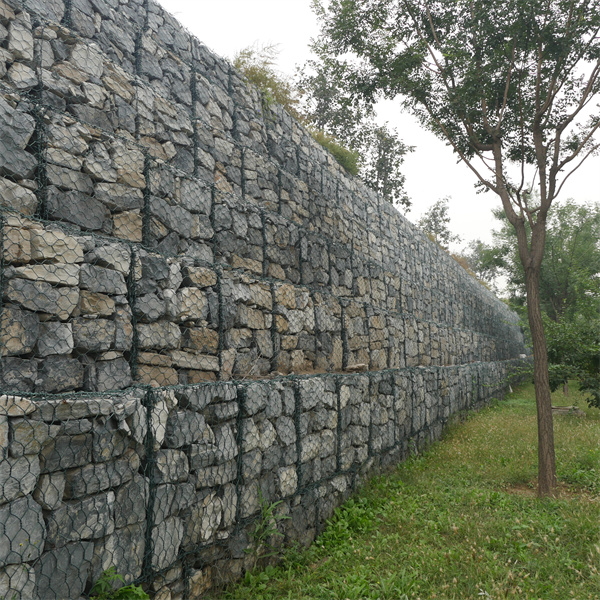Nov . 13, 2024 14:06 Back to list
best rocks for gabion baskets
The Best Rocks for Gabion Baskets
Gabion baskets have become increasingly popular in landscaping and civil engineering due to their versatility, aesthetic appeal, and ability to control erosion. These wire mesh containers, typically filled with rocks or stones, are utilized for various purposes, including retaining walls, riverbank stabilization, and decorative elements in gardens. Selecting the right type of rock for your gabion baskets is crucial to ensure durability, stability, and visual consistency. In this article, we will explore the best types of rocks for gabion baskets, their benefits, and how to choose the right one for your project.
1. Limestone
Limestone is a popular choice for filling gabion baskets due to its availability and cost-effectiveness. Its natural hues, ranging from light cream to dark gray, can create a beautiful, neutral aesthetic that complements various environments. Limestone is durable and can withstand weathering, making it suitable for both structural and decorative applications. Additionally, its porous nature allows for water drainage, which can help reduce the pressure on the gabion structure during heavy rainfall.
2. Granite
Granite is another excellent choice for gabion baskets. This igneous rock is known for its strength and resistance to wear, making it an ideal option for areas with high traffic or erosion potential. Granite comes in various colors and patterns, allowing for a unique and visually appealing design. Its durability also ensures that the basket will maintain its integrity over time, providing long-lasting support for gardens or landscaping features. Furthermore, granite’s density makes it very effective in preventing soil erosion, particularly in waterfront or slope stabilization projects.
3. River Rock
best rocks for gabion baskets

River rocks are smooth, rounded stones that vary in size and color, providing a natural and organic aesthetic that blends beautifully into landscape designs. They are often used in decorative applications or as a top layer for gabion baskets, adding a touch of elegance to pathways, gardens, or outdoor living spaces. While river rocks may be less effective structurally than limestone or granite, their aesthetic appeal makes them a popular choice for decorative gabion structures. However, it’s essential to use river rocks in conjunction with more stable materials if structural integrity is a concern.
4. Basalt
Basalt is a dense, volcanic rock that offers exceptional durability and weather resistance. Its dark coloration provides a striking contrast in many landscapes, making it a popular choice for modern designs. Basalt is often used in urban environments and can be effective in controlling erosion due to its weight and dense structure. Like granite, basalt can withstand the effects of time and weather, ensuring that your gabion baskets remain functional and aesthetically pleasing for years.
5. Concrete Remnants
For those looking for a sustainable and cost-effective option, using concrete remnants can be a viable choice for filling gabion baskets. Recycled concrete can provide excellent structural support while helping to divert waste from landfills. It can be broken down into various sizes to fit within the baskets effectively. While it may not have the same aesthetic appeal as natural stone options, it can be painted or layered with decorative stones to enhance looks.
Conclusion
When selecting rocks for gabion baskets, consider factors such as appearance, durability, and suitability for the specific application. Limestone, granite, river rock, basalt, and concrete remnants each offer unique advantages that can enhance the function and appearance of your gabion structures. Ultimately, the best choice will depend on the project's requirements, your personal aesthetic preferences, and environmental considerations. By choosing the right rocks, you can create a stable, durable, and visually appealing gabion basket that blends harmoniously with its surroundings and serves its intended purpose effectively.
-
Why PVC Coated Gabion Mattress Is the Best Solution for Long-Term Erosion Control
NewsMay.23,2025
-
Gabion Wire Mesh: The Reinforced Solution for Modern Construction and Landscape Design
NewsMay.23,2025
-
Gabion Wall: The Flexible, Seismic-Resistant Solution for Modern Landscaping and Construction
NewsMay.23,2025
-
Gabion Wall Solutions: The Durable, Decorative, and Affordable Choice for Every Landscape
NewsMay.23,2025
-
Gabion Basket: The Durable and Flexible Alternative to Traditional Retaining Walls
NewsMay.23,2025
-
Gabion Basket: The Proven Solution for Slope Stability and Flood Control
NewsMay.23,2025
-
Versatility of Chain Link Fence Gabion
NewsMay.13,2025






